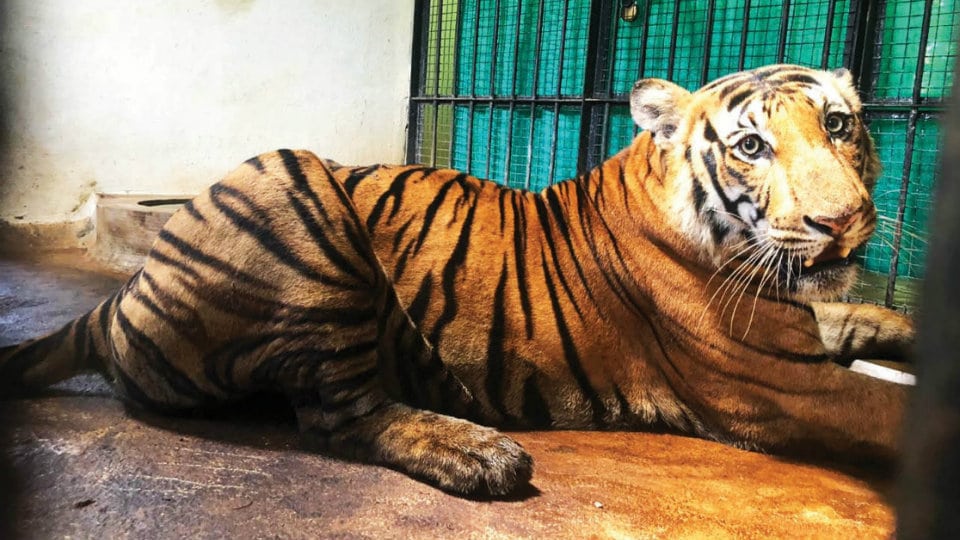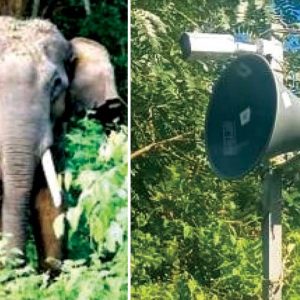Mysuru: In a significant boost to captive tiger breeding, the Sri Chamarajendra Zoological Gardens, popular as Mysuru Zoo, has planned to utilise the male tiger that was captured from Bandipur recently for breeding. The feline will be moved to Atal Bihari Vajpayee Zoological Park (Hampi Zoo).
After a massive operation with a 300-strong force, the Forest Department officials along with elephants caught the elusive tiger which had killed two villagers and 18 cattle heads at Bandipur Tiger Reserve in October this year. The big cat was trapped near Chowdahalli. The tiger, a healthy male aged about five years, was later shifted to Chamundi Animal Conservation, Rescue and Rehabilitation Centre set up by Mysuru Zoo at Koorgalli on the outskirts of Mysuru.
There are nine Zoos in the State including Mysuru Zoo and most of the tigers in these Zoos belong to the same blood group. As there is a need for fresh species of tiger family, the Zoo authorities in Mysuru and Hampi are on the lookout for a suitable female tiger for mating with this captured male tiger.
The Zoo authorities, who normally do not expose captured felines to Zoo visitors, have now decided to use this tiger for breeding, as it is a fresh blood. These tigers which have grown up in the natural environs of the forest, are blessed with the natural instinct of preying.
The tiger, in the last one year and before its capture, was seen wandering in search of territory through several forest ranges and ended up in the buffer area of Gopalaswamy Betta Range in Bandipur. Officials, who verified their database for the authentication of the big cat, said that it was the same tiger that was previously camera-trapped in Nagarahole Tiger Reserve near Dammanakatte (Kabini) in Antharasanthe Range.
The tiger was first photographed in 2018 January-February in Antharasanthe Range. It was spotted at Moolehole Range of Bandipur Tiger Reserve in December 2018. In about a year’s time, the tiger had walked about 100 kms from Nagarahole National Park to Bandipur Tiger Reserve in search of territory and a mate.
The century-old Mysuru Zoo is considered one of the leading Indian Zoos for captive breeding. The Zoo has successfully bred giraffes in captivity. It may be mentioned here that in 2015, rescued wild tigress Ramya was used to introduce a new strain of genes in the captive breeding programme of the Mysuru Zoo.
The Zoo had successfully bred tigers and had introduced new strain of genes for stronger and healthier cubs. Brahma, a male cub aged 12 years, which was caught in Brahmagiri forest range in 2008, and white tigress Manya had been paired for the first time in May 2011. Manya gave birth to three cubs.
Over 73 critically endangered species was being taken up for breeding at various Indian Zoos, including the Mysuru Zoo. The aim is to breed such species in captivity and release them into the wild later, after meeting all the protocols. The species for conservation breeding are identified after taking note of the drastic decline in their numbers in the wild.
By M.T. Yogesh Kumar








Recent Comments